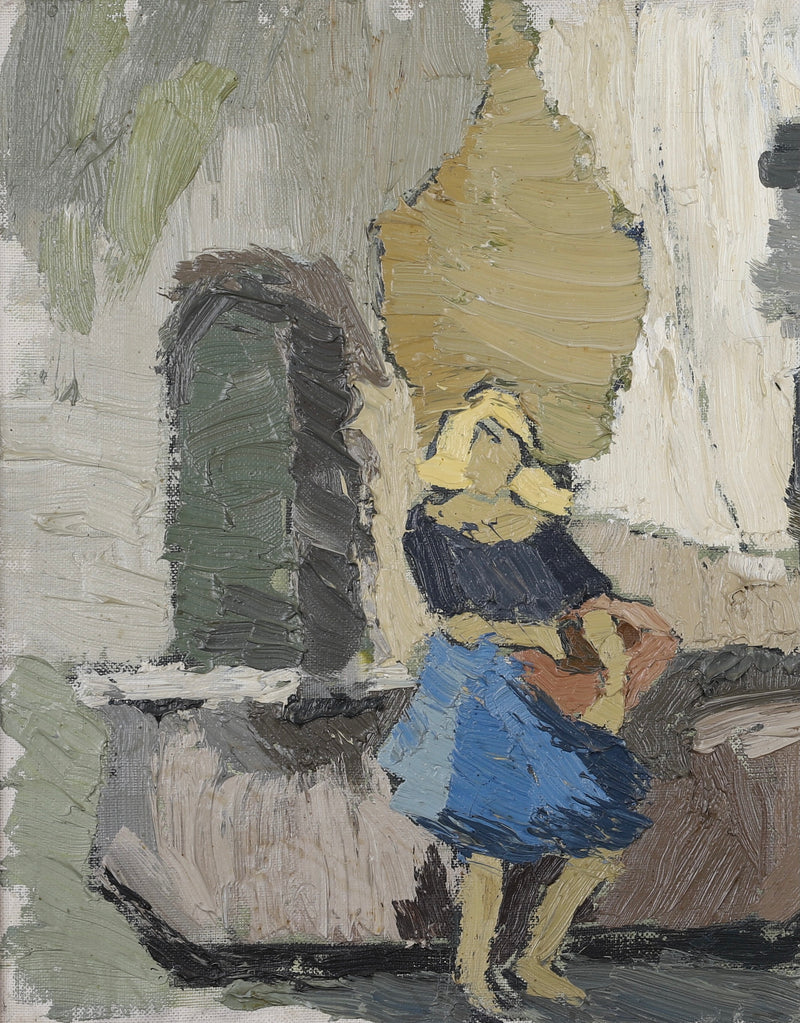Figurative Oil Painting: From Concept to Canvas - A Step-by-Step Strategy
The Duty of Feeling and Expression in Metaphorical Oil Paint: A Thorough Evaluation of Subject Matter and Composition
The interplay of feeling and expression in metaphorical oil paint serves as a critical lens with which one can analyze the detailed connection in between subject matter and structure. Artists harness numerous techniques, from shade selection to brushstroke dynamics, to grow emotional resonance within their jobs.
Understanding Feeling in Art
Feeling in art works as a powerful avenue for expression, allowing artists to share complex feelings with their job. In figurative oil painting, this emotional deepness is frequently depicted via the depiction of the human figure, catching the subtleties of human experience. The selection of subject matter, color combination, and brushwork all add to the psychological vibration of a piece.
Artists frequently draw upon individual experiences, social concerns, or global themes to evoke feelings in the customer. A portrait might reflect susceptability, while a vibrant figure in movement can symbolize liberty or chaos. These emotional threads connect the audience to the art work, cultivating a dialogue that transcends the visual medium.
Furthermore, the interplay between light and shadow can magnify psychological strength, assisting the visitor's stare and accentuating certain components within the make-up. Making use of appearance in oil paint better adds layers of intricacy, welcoming a responsive action that improves the emotional experience. Generally, comprehending emotion in art is important for appreciating the subtleties that identify metaphorical oil paint, as it transforms mere representation right into an extensive exploration of the human condition.
Key Elements of Composition
In the world of metaphorical oil paint, the structure acts as the underlying structure that organizes visual components and improves the emotional narrative. Crucial parts of make-up consist of balance, comparison, centerpiece, and rhythm, each adding to the overall effect of the art work.
Equilibrium describes the circulation of aesthetic weight within the paint, which can be attained through balanced or asymmetrical setups. A well-balanced structure offers security, enabling the audience to involve with the piece sympathetically - figurative oil painting. Contrast, on the various other hand, involves comparing different components, such as light and dark or cozy and amazing colors, to assist the audience's eye and stimulate emotional feedbacks
The prime focus is important, as it routes interest to one of the most considerable component of the painting, commonly highlighting the emotional core of the story. Through strategies like color saturation or placement, musicians can highlight this location efficiently. Rhythm pertains to the rep of elements, producing a feeling of movement and circulation throughout the composition. By skillfully incorporating these key elements, artists can craft compelling and mentally powerful metaphorical oil paints that captivate and engage their audience.
Topic Issue and Its Influence
Topic plays a pivotal role in figurative oil painting, as it not only works as the foundation for the narrative however likewise shapes the customer's analysis and emotional interaction with the art work. The option of subject-- be it a singular number, a team dynamic, or a thematic depiction-- straight influences the emotional environment communicated to the target market.

For instance, portraits frequently stimulate personal links, disclosing the ins and outs of human expression and character, while scenes portraying communal tasks can develop a sense of belonging or nostalgia. Moreover, the historic and cultural context of the subject improves the viewer's understanding, prompting much deeper reflections on social norms, worths, and the human problem.
Different subject issues also create differing levels of interaction; a dramatic dispute shown through numbers in stress may generate sensations of stress and anxiety or compassion, while see this here serene landscapes can conjure up tranquility and reflection. Ultimately, the effect of subject matter in metaphorical oil paint is profound, as it functions as a channel for emotional vibration, assisting the viewer's feedback and analysis, and cultivating a connection in between the viewer and the art work. This interaction is crucial for the successful communication of the artist's intent.
Methods for Stimulating Sensations
The performance of figurative oil painting in conveying emotions is substantially her explanation affected by the strategies used by the artist. One of the most vital methods is making use of color concept, where the critical selection of tones can stimulate details psychological feedbacks. Warm shades, such as oranges and reds, commonly evoke sensations of interest or aggressiveness, while cooler tones like blues and eco-friendlies have a tendency to stimulate calmness or sadness.
Another essential technique is the adjustment of light and darkness, called chiaroscuro. This technique improves the three-dimensionality of figures, creating significant contrasts that can escalate psychological depth. The placement of light can lead visitors' feelings, highlighting particular elements of the make-up.
Brushwork additionally plays a critical duty; loose, expressive strokes can convey power and spontaneity, whereas smoother methods may recommend harmony or precision. Furthermore, the setup of topics within the composition can affect psychological impact. Close distance can suggest affection, while distance might suggest isolation.
Inevitably, the mix of these techniques makes it possible for musicians to craft narratives that reverberate with the customer, transforming a plain visual experience right into an expressive psychological trip. - figurative oil painting

Case Researches of Significant Works
Taking a look at significant works of figurative oil paint reveals just how various methods are employed to evoke effective feelings. One exemplary instance is Edvard Munch's "The Scream," where the altered number and swirling background convey existential dread. Munch's use of color-- dazzling oranges and deep blues-- magnifies the emotional influence, showcasing just how scheme options can form customer experience.
One more substantial job is Pablo Picasso's "Les Demoiselles d'Avignon." Right here, fragmented kinds and vibrant brushstrokes show a troubled psychological landscape, challenging traditional depictions of the female number. Picasso's ingenious structure not just catches the viewer's interest yet likewise welcomes reflection on styles of identification and sexuality.
Furthermore, Frida Kahlo's "The 2 Fridas" supplies a poignant expedition of duality and self-identity. The different figures, connected by a common heart, exhibit Kahlo's emotional depth and personal narrative. Recommended Reading figurative oil painting. Her meticulous focus to detail and symbolic components serve to involve audiences on a natural degree
These study underscore the extensive connection in between emotion and composition in figurative oil painting, disclosing how artists harness strategy to connect intricate sensations and narratives that resonate throughout time and society.

Verdict
Finally, the interaction of feeling and expression in metaphorical oil painting substantially boosts the customer's experience and interpretation of the artwork. With a careful choice of topic and compositional strategies, musicians communicate extensive narratives that reverberate on both personal and universal degrees. The application of color theory, brushwork, and chiaroscuro more magnifies psychological depth, changing each canvas into an effective reflection of the intricacies of the human experience.
In figurative oil paint, this psychological depth is often depicted through the representation of the human figure, recording the nuances of human experience.Moreover, the interplay between light and shadow can enhance emotional strength, leading the visitor's stare and attracting focus to specific aspects within the structure. The use of structure in oil paint additionally includes layers of intricacy, inviting a responsive response that enhances the psychological experience.The focal factor is critical, as it routes focus to the most considerable part of the paint, usually highlighting the psychological core of the story. Ultimately, the influence of subject issue in metaphorical oil paint is profound, as it offers as a conduit for emotional vibration, directing the viewer's reaction and interpretation, and promoting a link in between the art work and the viewer.